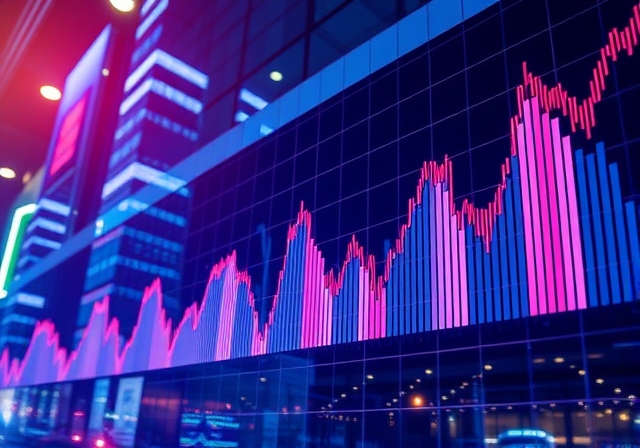Trading futures involves speculating on the price movement of assets like commodities, stocks, or indices through standardized contracts. This financial instrument offers profit opportunities but also comes with significant risks due to leverage and market volatility.
To effectively know how to trade futures, one should:
- Choose a reputable broker to facilitate trades.
- Conduct thorough market research and analysis.
- Develop a solid trading plan with risk management strategies.
- Practice with a demo account to hone skills without financial exposure.
- Monitor trades actively using technical indicators and market news.
Despite the risks such as leverage exposure and margin calls, futures trading provides benefits like diversification, potential high returns, and risk management through hedging. Implementing strategies like trend following, spread trading, and news-based trading can enhance your trading approach and maximize returns.
To trade futures, follow these steps:
- Learn the basics of futures contracts and understand how they work.
- Choose a reputable broker that offers futures trading.
- Open a trading account and fund it.
- Select the futures contracts you want to trade based on market analysis.
- Develop a trading strategy and define your risk management plan.
- Place your trade orders and monitor the market to manage positions.
- Close your positions according to your trading plan.
1. Choose a Broker
Choosing a broker in futures trading impacts your trading experience by influencing costs, platform usability, and market access.
Broker selection should consider:
- Commission transparency
- Trading costs
- Access to futures exchanges
A broker with a user-friendly platform like this one enables efficient market navigation.
If you want to trade with someone else’s money, consider these prop firms and understand how they work.
2. Research and Analyze the Market
Research and market analysis are essential for futures trading success. Traders use technical analysis to study historical price data and trading signals, and fundamental analysis to evaluate economic indicators like GDP and interest rates.
Effective futures trading combines these analyses to inform decisions based on current market conditions and potential opportunities.
3. Develop a Trading Plan
Developing a trading plan involves setting clear financial goals, defining entry and exit points, and implementing risk management strategies.
A robust trading plan includes monitoring risk-to-reward ratios and managing capital allocation to minimize potential losses.
Effective trading plans help traders systematically approach the market and increase their chances of consistent success.
4. Practice with a Demo Account
Practicing with a demo account helps traders apply trading strategies without financial risk.
A demo account allows traders to experiment with techniques and understand market dynamics.
Using a demo account helps identify strengths and weaknesses, leading to informed trading practices.
Demo accounts foster patience and discipline, essential for successful trading with real capital.
5. Monitor and Manage Your Trades
To monitor and manage trades in futures, traders should use technical indicators like moving averages and Relative Strength Index (RSI) for market momentum insights.
Traders should implement stop-loss orders and adapt to market trends to quickly respond to price movements.
Monitoring tools like news feeds and sentiment analysis platforms help gauge market shifts and public opinion.
Effective trade management involves anticipating price changes and making informed decisions to protect investments.
What Are the Risks of Trading Futures?
The risks of trading futures include high leverage exposure, which can lead to significant financial loss.
Leverage amplifies both potential gains and losses, making market volatility a critical risk factor.
Margin calls occur when the account balance falls below required levels, necessitating additional funds or position liquidation.
Futures trading risks demand careful management to avoid significant financial impact.
1. Leverage Risk
Futures trading amplifies both potential profits and losses by allowing traders to borrow funds to increase their market position size.
This means that even small negative price movements can result in significant losses, making risk management essential.
Effective risk management in futures trading includes:
- Setting stop-loss orders
- Limiting position sizes
- Regularly reviewing market conditions
2. Market Volatility
Refers to the rate at which the price of a security or market index increases or decreases for a given set of returns.
Measures the risk and uncertainty in the market, often influenced by economic events, market sentiment, and external factors.
High volatility indicates larger price swings, while low volatility indicates more stable price movements.
3. Margin Calls
It occurs when the value of an account drops below the required maintenance margin, prompting a broker to request additional funds to support the investor’s positions.
Triggered by insufficient equity in a leveraged account due to market movements or poor trading decisions.
Understanding margin requirements helps traders avoid margin calls and maintain financial stability.
What Are the Benefits of Trading Futures?
Trading futures offers benefits such as risk management, diversification, high liquidity, and leverage opportunities.
Futures trading allows investors to hedge against price fluctuations, diversify portfolios across various asset classes, and access highly liquid markets.
Additionally, leverage in futures trading enables investors to control large positions with a smaller amount of capital.
1. Diversification
Futures trading allows investors to spread risk across various asset classes by incorporating different futures contracts into their portfolios.
Reduces volatility by mitigating adverse effects from any single market.
Markets’ varied reactions to economic trends make diversification crucial for stable performance.
2. Potential for High Returns
Trading futures offers the potential for high returns by using leverage effectively.
Leverage can amplify both profits and losses, making risk management essential.
Successful futures trading requires understanding market trends and developing strategic trading plans.
3. Hedging Against Risks
Hedging is a risk management strategy in futures trading that protects assets from unfavorable market movements.
Works by taking an opposite position in the futures market to offset potential losses, using tools like options and futures contracts.
Investors use hedging to stabilize returns and manage risks from price fluctuations.
What Are Some Strategies for Trading Futures?
Strategies for trading futures include trend following, spread trading, and news-based trading.
- Trend following involves buying or selling futures contracts based on the direction of market trends.
- Spread trading entails taking opposite positions in different futures contracts to profit from price differentials.
- News-based trading focuses on making trades based on economic reports and news events that impact market prices.
1. Trend Following
Trend following is a trading strategy that involves analyzing price charts and using trading signals to identify and capitalize on price trends.
Traders use techniques like moving averages, trend lines, and relative strength indicators to spot market trends.
The goal of trend following is to harness market momentum and make systematic trading decisions.
2. Spread Trading
A strategy that involves taking opposing positions in different futures contracts to profit from price differences between them.
Works by leveraging price differentials between related instruments, reducing risk and transaction costs compared to outright positions.
3. Arbitrage
The practice of profiting from price differences of the same asset in different markets.
Traders buy the asset at a lower price in one market and sell it at a higher price in another.
Arbitrage ensures risk-free profits by exploiting market inefficiencies.
4. News-Based Trading
Strategy where traders use economic news and indicators to influence trading decisions in the futures market.
Capitalizes on the immediate impact of news on market prices, allowing traders to react to price changes swiftly.
Staying informed about key economic events helps traders time their trades effectively.
5. Options Trading
Involves buying and selling options contracts, which give the right but not the obligation to buy or sell an asset at a predetermined price before a specific date.
Allows traders to hedge risk or speculate on price movements with defined risk profiles, often using strategies like covered calls and protective puts.
Requires less capital than buying the underlying asset and can be integrated into broader trading plans for diversification and leverage.
Frequently Asked Questions
What are futures contracts?
- Futures contracts are agreements to buy or sell a specific asset, such as commodities, currency, or stocks, at a predetermined price and date in the future.
How do I trade futures?
- To trade futures, you will need to open an account with a broker that offers futures trading. You can then place orders to buy or sell futures contracts through your broker.
What are the benefits of trading futures?
- Trading futures can provide investors with the potential for higher returns and portfolio diversification. It also allows traders to take advantage of price movements in different asset classes.
What are the risks involved in trading futures?
- Like any type of investment, trading futures involves risks, such as market volatility and the potential for loss of capital. It is important to have a solid understanding of the market and a risk management strategy in place.
Can I trade futures with a small amount of capital?
- Yes, it is possible to trade futures with a small amount of capital. However, it is important to remember that futures trading involves leverage, which can magnify both profits and losses.
What is the difference between futures for stock market and options?
- Futures and options are both derivatives, but there are key differences between the two. Futures contracts involve an obligation to buy or sell an asset at a predetermined price and date, while options contracts give the holder the right, but not the obligation, to buy or sell an asset at a set price and date.
Learning the techniques on how to trade futures is similar to options trading as futures are traded by contracts. Plus there are tax benefits as well, be sure to check with your accountant.
> Recommended: brokerage for trading > tastytrade.com.
> Recommended: order flow heatmap > bookmap.com.



